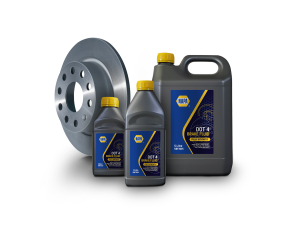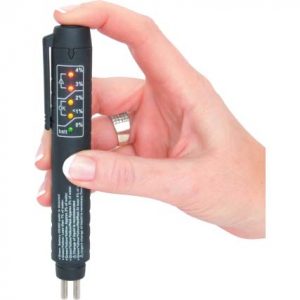
Know How – Expert Edition – Brake Fluid Testing
22 Jul 2022
Category:
With Graeme Ryder
Graeme is an automotive expert with over 20 years of engineering and industry experience who educates technicians at all levels in practical application and installation best practice via TechMate, our specialist technical support partners. In this issue, Graeme explains the why’s, how’s, and when’s of testing and changing brake fluid.
Introduction
It can be easy to forget about and neglect your brake fluid, but doing so can result in a total braking failure. For a better understanding of why, how, and when you should be testing (and changing) brake fluid, look no further than NAPA Know How.

Why does brake fluid need to be changed?
Many traditional brake fluids are hygroscopic. This means they attract and absorb moisture from the atmosphere. Water vapour molecules can gradually penetrate flexible rubber brake hoses, and this process happens throughout the service life despite brake fluid being in a “sealed” brake system.
Over time, this lowers the boiling point of the brake fluid and increases the risk of corrosion to metal components. As the level of moisture in the brake fluid rises, the boiling point will eventually reach a critical level where it becomes dangerous.
Vehicle brakes work by clamping a brake pad or shoe against a moving disc or drum. The friction generates significant heat, with much of it dissipating into the atmosphere. However, some heat transfers to the wheel cylinders and calipers, which contain brake fluid. If the temperature approaches the boiling point of the brake fluid, bubbles of vapour (gas) form in the brake system. Unlike a liquid, a gas is compressible.

Vapour-Lock
The next time the brake pedal is pressed, its travel may be used entirely to compress the vapour, resulting in a complete loss of braking. This extremely dangerous phenomenon is known as ‘vapour-lock’ or ‘brake fade.’ The lower the boiling point, the greater the danger of vapour-lock occurring. Checking and replacing the brake fluid on occasion can prevent this.
How do you check the boiling point of brake fluid?
Electronic devices to test brake fluid when in service are increasing in popularity. When designed and used correctly, they can improve road safety while providing profit opportunities for garages. However, it’s important to be aware that some designs are much more accurate than others.
 Conductivity Test Pens
Conductivity Test Pens
Conductivity test pens will estimate the water content electronically by measuring the conductivity of the fluid, which in theory increases as water is absorbed. The tester then converts this measurement into a supposed boiling point. In practice, this method of measurement is dangerously flawed as the conductivity of new brake fluids varies significantly depending on manufacturer, DOT grade, and formulation. Unless this kind of tester is calibrated for one manufacturer’s product and used for that product only, it is likely to give very inaccurate, misleading, and dangerous results.
BOILING POINT TESTERS
In contrast, boiling point testers heat a sample of the fluid to establish the boiling point, removing the problem of varying conductivities. These provide the best balance of performance and economy currently available. For accuracy and vehicle safety, brake fluid should be tested with a boiling point device. Keep in mind, however, that caution, careful handling, and regular calibration are still required if results are to be reliable.
When should you change brake fluid?
The recommended intervals for changing brake fluid vary drastically between manufacturers. Some recommend as often as every two years, while others say it’s never needed. This can cause great confusion for vehicle owners and the workshops providing the service.
NAPA recommend that brake fluid be replaced every 2 years or when the boiling point drops below 200°C. If the boiling point reads below 180°C, the brake fluid should be replaced immediately.
DID YOU KNOW?
NAPA DOT 4 brake fluid is recommended for use in all vehicle applications that specify a glycol-based DOT 3 or 4 fluid. NAPA DOT 4 ESP brake fluid ensures maximum safety levels for the ESP system in all DOT 4-specified vehicles.
IN NEED OF DIRECT SUPPORT?
TechMate is a team of automotive technical specialists providing direct support across the country. As a partner to NAPA, TechMate knows the NAPA product portfolio inside and out and uses their expertise to support NAPA customers every step of the way.
Contact TechMate on 01174 288090 or email [email protected] to arrange a visit.
Alternatively, contact NAPA Technical on 03333 136597 or email [email protected] for remote advice.
Become a NAPA Stockist Download PDF guide
Chevrolet Spark Clutch Fitment Guide
A rattle generated from the clutch fork/release bearing area may be evident after a new...
Read MoreKia Sportage Clutch Fitment Guide
When installing a new clutch kit to the Kia Sportage CRDI (1.7, 2010-2015), you may...
Read MoreFuel Filter Fitment Guide - NFF2122
When replacing the fuel filter, it’s important to ensure correct fitment is followed. Keep the...
Read More